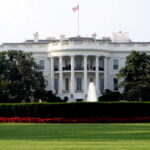The AFC Asian Cup 2025 is set to be one of the most anticipated football tournaments in Asia’s history. Hosted by China, it returns to East Asia for the first time since 2004. Scheduled for January 2025, this tournament brings together the continent’s top 24 national teams in a celebration of football, culture, and continental pride.
With Asia’s footballing standards rapidly improving and star players making waves in Europe and beyond, the 2025 Asian Cup promises high-quality matches, passionate fanbases, and potentially historic results.
In this article, we explore China’s preparations, the tournament format, key teams and players, tactical developments, and why the 2025 AFC Asian Cup could redefine Asian football for the next generation.
1. China’s Role as Host Nation
Originally scheduled to host the 2023 edition, China withdrew due to COVID-19 concerns. Now, in 2025, they are back with an upgraded plan—new stadiums, better infrastructure, and an ambition to rebrand Chinese football on the global stage.
Key host cities include:
- Beijing – National Stadium (Bird’s Nest)
- Shanghai – Pudong Football Stadium
- Guangzhou
- Chengdu
- Wuhan
- Xi’an
- Tianjin
- Hangzhou
All stadiums have undergone renovation or construction to meet AFC and FIFA standards, with an emphasis on sustainability and fan experience.
2. Tournament Format
The 2025 Asian Cup will feature the same format introduced in 2019:
- 24 teams split into 6 groups of 4
- Top two teams from each group + four best third-placed teams advance to the Round of 16
- Single-elimination from there through to the final
This format allows for upsets and close group finishes, increasing competitiveness and excitement.
3. Teams to Watch
Japan 🇯🇵
The undisputed powerhouse of Asian football, boasting technical superiority and tactical discipline. Japan combines domestic J-League development with a growing list of European-based players.
Key players:
- Takefusa Kubo (Real Sociedad)
- Kaoru Mitoma (Brighton)
- Daichi Kamada (Lazio)
- Ritsu Dōan (Freiburg)
South Korea 🇰🇷
Always a tournament favorite with a mix of flair, fitness, and fighting spirit. Their overseas players give them a competitive edge.
Key players:
- Son Heung-min (Tottenham)
- Kim Min-jae (Bayern Munich)
- Lee Kang-in (PSG)
- Hwang Hee-chan (Wolves)
Iran 🇮🇷
One of Asia’s most consistent teams, known for physical play and solid defense. Iran will be looking to win their first title since 1976.
Key players:
- Mehdi Taremi (Porto)
- Sardar Azmoun (Roma)
- Alireza Jahanbakhsh (Feyenoord)
Qatar 🇶🇦
Defending champions (2019 and 2023), with homegrown talent and an ever-improving tactical system under Spanish-style coaching.
Key players:
- Akram Afif
- Almoez Ali
- Hassan Al-Haydos
Saudi Arabia 🇸🇦
Buoyed by the growth of the Saudi Pro League, they aim to carry their regional dominance into continental success.
Key players:
- Salem Al-Dawsari
- Abdulelah Al-Malki
- Firas Al-Buraikan
4. Dark Horses and Rising Nations
Uzbekistan 🇺🇿
A strong youth system and an ambitious national program. Technically solid with excellent midfield control.
Iraq 🇮🇶
2023 Gulf Cup winners with a strong fanbase and physical play style.
Australia 🇦🇺
Officially part of the AFC since 2006, the Socceroos always bring athleticism, structure, and experience.
Vietnam 🇻🇳
Strong U-23 performances have translated into growing senior team potential. A possible Cinderella story.
5. Tactical Evolution in Asian Football
The 2025 edition will reflect the tactical modernization of Asian national teams:
- Japan and South Korea now employ European-style pressing, possession, and zonal defense.
- Iran mixes compact defending with fast counters.
- Australia uses set pieces and physical dominance.
- Qatar and Saudi Arabia use high-tempo build-ups and midfield triangles.
Overall, Asian teams are blending local flair with global tactics, resulting in better performances in global competitions like the World Cup.
6. Star Players to Watch
Expect big performances from:
- Kaoru Mitoma (Japan) – Speed and creativity from the wing.
- Lee Kang-in (South Korea) – Midfield wizard with European pedigree.
- Mehdi Taremi (Iran) – Prolific striker, strong in the air and clinical.
- Akram Afif (Qatar) – Agile playmaker with flair.
- Salem Al-Dawsari (Saudi Arabia) – Veteran leader and finisher.
Watch also for young breakout stars, many of whom could earn big transfers post-tournament.
7. China’s National Team: Ready for Redemption?
The host nation will enter under pressure. China has underperformed in recent years despite massive investments in football.
Strengths:
- Strong physical presence
- Growing domestic league
- Young prospects like Xu Haoyang and Wu Shaocong
Weaknesses:
- Lack of top-tier international experience
- Tactical inconsistencies
While not a favorite, the home advantage and improved preparation could help China reach the knockout stages.
8. Fan Culture and Tournament Atmosphere
Asian football is known for its passionate and respectful fan culture:
- Japanese and Korean fans are known for elaborate tifos and stadium choreography.
- Iranian and Saudi fans bring noise and intensity.
- Vietnamese and Thai fans travel in large, colorful groups.
China is preparing large-scale fan zones, public viewing events, and youth activations to boost tournament engagement. Online platforms like Douyin, Weibo, and YouTube will offer extensive coverage.
9. Stakes and Legacy
The 2025 Asian Cup is more than just a trophy:
- It offers continental pride and FIFA rankings points
- Can influence World Cup 2026 qualification momentum
- Serves as a showcase for players aiming for European moves
- A springboard for domestic league interest and commercial investment
It’s also a major test for China’s sporting soft power, as it seeks to position itself as a football superpower.










